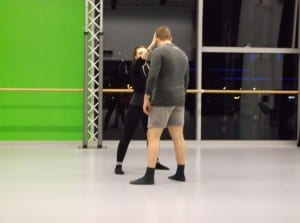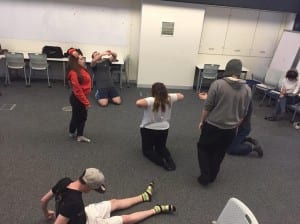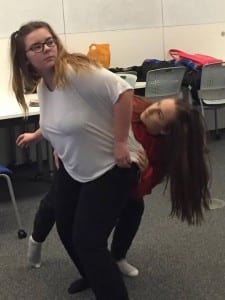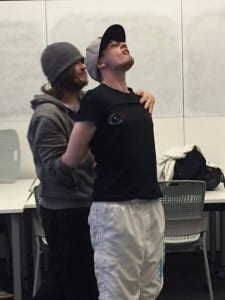- Photo Credit: Lincoln Performing Arts Centre
- Photo Credit: Lincoln Performing Arts Centre
- Photo Credit: Lincoln Performing Arts Centre
- Photo Credit: Lincoln Performing Arts Centre
On the 22nd of May 2017, Rubbish Theatre performed If An Orchid Was All You Had at the Lincoln Performing Arts Centre. Throughout the process of rehearsals as a company we have learnt to be patient and collaborate with all ideas that are provided. We worked as a team to create a visually stimulating performance and installation for our audience. In the final show we received positive comments from our audience complimenting our performance as a whole. Without all of the aspects such as Set Design, Costume, Choreography, Directing this performance would not have been possible. Carlson quotes Goldberg within his book explaining: ‘ The history of performance art in the twentieth century is the history of a permissive, open-ended medium with endless variables executed by artists impatient with the limitations of more established forms.’ (Goldberg, 1997, cited in Carlson, 1996, 84).

Before the Show. Photo Credit: Lincoln Performing Arts Centre
Our performance in particular could be described as an ‘open-ended medium’ due to the comments made by the audience. We discussed as a company how we wanted our show to end, but in the end result our show was open to interpretation for the audience. The different ideas and endings the audience came up with for our performance opened our performance up to and interpretive piece. This inspired me. The creation that we as a company created had been recognised and analysed by an audience and changed in different ways, all that make sense. This added to our piece being an ‘open-minded medium’. This was because our piece was an exploration of madness revealing selected stages that we discovered and researched. This gives t he audience already the opportunity to reflect on what we had discovered yet connect to the character that Jacob Toon was performing ‘The Man’. The reflection from the audience could not have made us as a company more proud. We all collaborated and created a beautiful piece that was described by one of our audience members and lecturer Andy Jordan as: ‘ A suitably challenging, wacky, baffling, intelligent, artful, entertaining, madcap enterprise.’ (Jordan, 2017). The experience in creating, choreographing and performing If An Orchid Was All You Had was inspiring and memorable and I could not be prouder of my company with what we created.
he audience already the opportunity to reflect on what we had discovered yet connect to the character that Jacob Toon was performing ‘The Man’. The reflection from the audience could not have made us as a company more proud. We all collaborated and created a beautiful piece that was described by one of our audience members and lecturer Andy Jordan as: ‘ A suitably challenging, wacky, baffling, intelligent, artful, entertaining, madcap enterprise.’ (Jordan, 2017). The experience in creating, choreographing and performing If An Orchid Was All You Had was inspiring and memorable and I could not be prouder of my company with what we created.
References
Carlson, M. (1996) Performance: A Critical Introduction. London: Routledge.
Jordan, A. (2017) Orchid. [email] Sent to Emily Brunt, Aiden Clark, James Crawford, Kerrie Crockford, Jacob Kay, Joshua Pearson, Jake Skelton, Rowanna Soyza, Jacob Toon, Rebecca Watson, 22 May.
Lincoln School of Fine & Performing Arts (2017) IAOWAYH photos [image]. Available from https://www.flickr.com/photos/61839232@N02/with/34016768033/ [accessed 29 May 2017].












